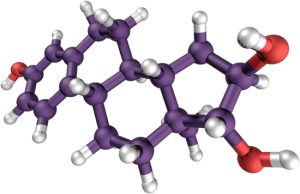
Breast cancer's responsiveness to estrogenA female sex hormone that is primarily produced by the ovaries. Its primary function is to regulate the menstrual cycle and assist in the production of secondary sex characteristics such as breasts. It may even play a role in the production of cancer cells in the breast tissue. can determine the type—ER, PR, or HR.
It can seem like staying informed about breast health requires learning a whole new language, especially when it comes to the many types of breast cancer and the terms that describe them. Is it invasive or non-invasive? Metastatic? Recurrent? Ductal? Lobular? What do all these words even mean?!
Different types can exhibit different breast cancer symptoms and require different kinds of treatment. Since breast health education is our mission here at The Maurer Foundation, let’s go through a brief outline of the various types of breast cancer.
Where Breast Cancer Begins
The area in the breast where cancer begins can determine how it behaves. There are several sites where cancer can begin, but the most common include the milk ducts, the milk-producing lobulesThe place within the breast where milk is manufactured in the breast., and connective tissues. The most common type of breast cancer is ductal carcinoma, or cancer beginning in the milk ducts that carry milk from the lobules to the nipple.
Whether Breast Cancer Spreads
This is a very important distinction: whether a cancer is invasive or non-invasive (also known as in situ) indicates if it has spread beyond its place of origin. In situ means “in the original place”, and many types of breast cancer use the abbreviation “IS” in their names to describe whether they are invasive or not. For instance, ductal carcinoma has two subtypes, “DCIS” (“ductal carcinoma in situ” and “IDC” (invasive ductal carcinoma).
Invasive cancers, as you might guess, spread outside the duct or lobule where they began, infiltrating the surrounding tissue and even moving to other parts of the body. Sometimes non-invasive breast cancers are described as pre-cancerous because they might eventually become invasive cancers. This is why early detection is one of the most important tools we have against breast cancer!
How Breast Cancer Responds to Hormones
Some types of breast cancer will respond differently to exposure to hormones like estrogen, which naturally occur in the body. This means treatments called hormone-based therapy can be quite effective on certain types of breast cancer.
- Estrogen receptor (ER) positive breast cancers are sensitive to estrogen.
- ProgesteroneA hormone that stimulates the uterus to prepare for pregnancy, produced mainly by the ovaries. Progesterone may play a role in certain breast cancers. receptor (PR) positive breast cancers are sensitive to progesterone.
- HormoneA chemical substance produced in the body that controls and regulates the activity of certain cells or organs. receptor (HR) negative breast cancers don’t respond to hormones.
Breast Cancer and HER-2
We’re still learning about the interaction between breast cancer and genetics, but we do know that a geneA sequence in the DNA which can be passed down from parent to child. Genes helps determine physical and functional traits for the body. called HER-2 found on cancer cells can lead to a form of effective treatment. Some breast cancer cells have lots of copies of the HER-2 gene, which means they produce a great deal of a protein called HER-2 that promotes the cells’ growth and multiplication. Some medicines can shut down this protein, meaning the cells that depend on it can be slowed down and even destroyed.
This leads to another group of classifications involving hormones and HER-2, including:
- Group 1: ER & PR positive, HER-2 negative
- Group 2: ER & HER-2 positive, PR negative
- Group 3: HER-2 positive, ER & PR negative
- Group 4: ER, PR, & HER-2 negative, commonly known as triple negative.
These descriptions are important because it determines which treatments will be most effective, often used in combination with chemotherapyTreatment with drugs to destroy or slow down the growth of cancer cells. Often referred to as systematic treatment, because it acts throughout the body, as opposed to localized treatments, like surgery or radiation.. Group 1 may benefit from hormone-based therapy; group 2 from hormone and HER-2 therapies; group 3 from HER-2 therapy; and group 4 usually only benefits from chemotherapy.
Other Breast Cancer Types & Terms
- Different breast cancer stages (ranging from 0 to 4) are terms used by doctors to describe the size and spread of cancer cells.
- Inflammatory breast cancer is an aggressive breast cancer characterized by redness, swelling, and irritation rather than a detectable lump or tumorA mass of cells that can be benign or malignant..
- Metastatic cancer is a breast cancer that has spread to other parts of the body, usually including the lungs, liver, bones, or brains. Metastatic breast cancer is usually classified as Stage 4.
- Recurrent breast cancer is simply breast cancer that returns after initial treatment, whether months or years later.
What Can You Do?
Staying educated about breast cancer is wonderful, but taking action is even better! Keep up with your regular breast self-exams . Pay attention to the ways you can reduce your breast cancer risks through healthy lifestyle choices. And spread the word about the importance of prevention and early detection: host one of our breast health programs in your school or community. Knowledge is power!